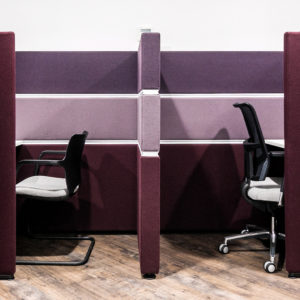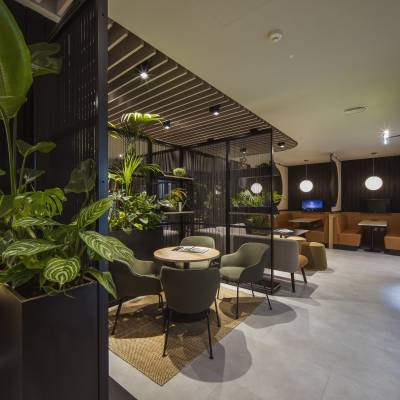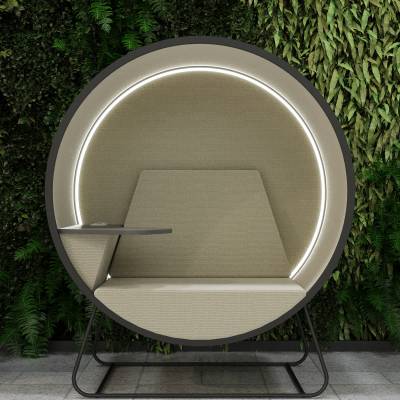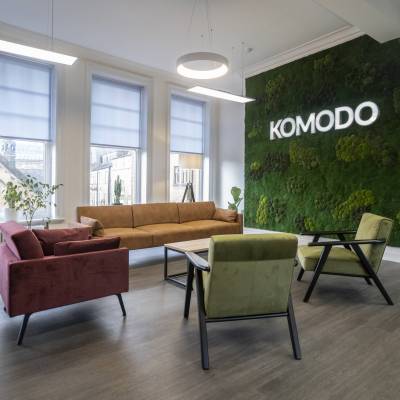Designing the neurodivergent workplace
 To understand neurodivergent workplace design, we first need to understand that everyone is different. Their needs are different, their wants are different, and their ability to overcome seemingly innocuous hurdles is different. In an ideal world, offices would be designed to cater to the needs of each individual, however, there needs to be some generality in order to meet the needs of the wider masses.
To understand neurodivergent workplace design, we first need to understand that everyone is different. Their needs are different, their wants are different, and their ability to overcome seemingly innocuous hurdles is different. In an ideal world, offices would be designed to cater to the needs of each individual, however, there needs to be some generality in order to meet the needs of the wider masses.
Roughly 80 percent of the population are what is known as neurotypical – they don’t display atypical patterns of thought or behaviour, which leaves the remaining 20 percent as neurodivergent. So, what do we mean by neurodivergent? Neurodivergence is applied to anyone with some level of cognitive diversity that affects sociability, learning, attention, mood, and other mental functions. The severity in conditions can fluctuate, but the modern workplace should be designed to support the full spectrum.
Neurodiversity refers specifically to our individual and unique point on the spectrum of human brain function. Because everyone occupies their own point, it becomes almost impossible to design a workplace for individual needs. That being said, by being completely aware of the challenges affecting those with neurodivergent conditions, we can design furniture and workplaces to support them.
Neurodiverse people tend to be over, or under-stimulated by their working environment. The impact of lights, smells, noise, and temperature is often understated, making seemingly harmless elements of the office like lighting a larger issue.
The critical factor in designing a comfortable and effective workplace for all, is the utilisation of a multitude of spaces. By minimising the appearance of difference, we can facilitate choice and ensure maximum inclusivity, resulting in a space that looks like an orthodox office space, but is anything but. When designing a neurodivergent workplace, a variety of essentials should be considered:
- Collaborative areas for extraversion
- Low stimulation areas for focus
- Quiet rooms for intense concentration
- Low-footfall areas to relieve social anxiety
- Active zones or offices to promote movement
- Materiality and lighting to create soothing environments
- Furniture laid out to indicate purpose
A report conducted by HOK shines fresh light upon the ways that designers can support and implement neurodivergent workplaces, and the organisations looking to embrace them. By utilising spatial design strategies, designers can create workplaces that are memorable and use a rhythm of common elements to ensure a reassuring feel. Within this, spatial characters must be considered to offer a variety of spaces that meet the needs of as large a proportion of the work force as possible.
By breaking down the various neurological groups, we are able to evaluate them more effectively, increasing our understanding of what’s required in furniture for neurodivergent workplaces. Each group has a different mix of ideal workplace components, meaning that by analysing them on top of one another, we can anticipate the elements required in the complete environment.
Neurodivergent
Neurodivergent employees have a wide and complex range of needs, so their workplace has to reflect that, rather than adopt a one-size-fits-all approach. Neurodivergent individuals can have sensational benefits to companies, with some common characteristics making them ideal for certain job roles. Some of the most recognised and advantageous qualities include their creative ability, free thinking and intense attention to the finer details.
However, to enhance and utilise these skills, they require quiet, intimate space away from the hustle and bustle of most modern offices. Collaboration and meeting zones can be of benefit to neurodivergent employees, but in smaller groups or 1-on-1. The specification of smaller meeting pods or rooms facilitate collaborative working between neurodivergent workers.
Neurotypical
Neurotypical employees flourish in multi-purpose open spaces. Their nature is such that they are socially confident, adaptable, and have minimal or no sensory requirements. This has increased benefits for organisations as they are more receptive to new spaces and ideas and are thus able to work in offices tailored more towards neurodivergent occupants.
Introverted
Similar to neurodivergent workers, introverts require more intimate spaces that enable them to articulate themselves in smaller groups, where they choose to participate, rather than feel the pressure of a large group. Introverts are highly perceptive, considered thinkers and tend to listen before speaking, making them invaluable members of teams.
Extraverted
Extraverts benefit from a working environment that facilitates their vibrant and open natures. They thrive on spontaneity and fast-paced collaboration, largely based on group interactions. Extraverts are required within teams to ensure that bold ideas are carried forwards at pace and ensure their delivery at the end, which in an open-plan environment and large groups, can negatively impact introverts and those with neurodivergent conditions.
At Connection, we are becoming increasingly aware of ways in which we can support neurodivergent employees. As one of the UK’s leading manufacturers of innovative commercial furniture, we have a multitude of ranges that can be specified in the modern workplace to support those with some cognitive dysfunction, ranging from soft-touch ranges to private work booths.


